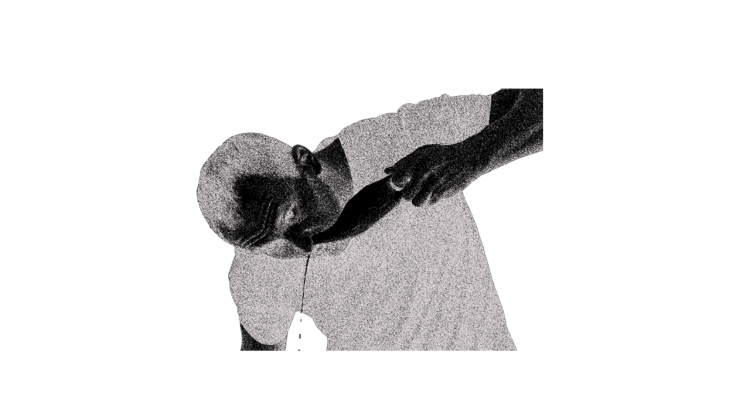
NETI KRIYA
In Yogic and Ayurvedic sciences, there are certain purificatory/cleansing processes which are very useful for detoxifying the body and mind (please refer to our blog on “Detox/Cleansing Techniques” for details).
In this article I will discuss the techniques, benefits, precautions, etc. of Neti Kriya.
Neti is originally a Sanskrit word used in Vedic scriptures, as “Neti-Neti”, which means neither this nor that. There is a deep philosophical explanation given using Neti twice with regard to this material creation and the Creator.
But here, we will try to understand its relevance to the six cleansing techniques mentioned in Yoga.
Neti is one of the important cleansing techniques mentioned in Yoga, which helps to cleanse the whole nasal passage and sinus, and thereby improve the functioning of the sense organs above the throat, e.g. sense of smell, sense of hearing, sense of vision, etc. as well as enhance brain power.
Mainly there are 4 different types of Neti Kriya mentioned in Yogic texts, which are as follows:
- Sutra Neti (special cotton string used to cleanse the nasal passage).
- Jala Neti (warm saline water is poured through each nostril alternatively, using a “Neti” pot).
- Dugdha Neti (warm milk is poured through each nostril alternatively, using a “Neti” pot).
- Ghrita Neti (warm melted ghee/clarified butter is poured through each nostril alternatively, using a “Neti” pot).
A) SUTRA NETI:-
Items required:
- Two thick cotton cords (available readymade at many Yoga studios & shops selling Yoga props, around the world).
- A bowl containing warm saline water.
- Melted pure ghee (clarified butter), or virgin coconut oil.
Technique:
- Sit comfortably in “Kagasana” (Crow Pose), keeping a gap of 1 – 1 ½ feet between the feet and the knees.
- Soak the “sutra Neti” (thick cotton cords) in the saline water and remove any extra/excess water from the cord.
- Apply a little warm melted pure ghee (clarified butter) or virgin coconut oil on the front part of the cotton cords.
- Insert one cord through the nostril which is more active – you can check it by placing a palm under the nostrils while exhaling. The nostril through which the force of air (exhalation) is stronger, is the more active nostril.
- Push the cord deep inside the nostril till it comes through to your throat and touches the throat.
- Put your right index and middle finger into your mouth to reach up to the throat and catch hold of the cord, while holding the other end of the cord with your left hand.
- Draw/pull the cord out through the mouth.
- Now do the same with the other cord, putting it into the other nostril and pulling it out through/from the mouth.
- Then try to pull the cords in and out using both hands while holding them at their ends very firmly, and feel the rubbing and massaging effect on the whole nasal passage.
- Do this rubbing 2 – 3 times to start with, increasing it to 10 – 12 times.
Precautions:
- If the cord cannot be pushed completely inside the nose, pull it out and try again after applying a little more ghee/oil. And also apply some ghee/oil inside the nostril to lubricate the passage – this can help to put the cord all the way through the nasal passage.
- Make sure to catch hold of the cord with the index & middle fingers of the right hand, as soon as it reaches/touches the throat.
- If there is a sensation to cough when the cord touches the throat, then pull out the cord, preferably through the mouth, without rubbing the nasal passage.
- In a rare case, if you see any blood coming out from the nose, then stop the process and apply some warm ghee/oil inside the nostril. One should not be alarmed by this, as this is caused by dead blood cells that may be accumulated in the nasal passage, or sometimes the skin is too sensitive and when the cord is rubbed in that area, it can cause a little bleeding, which stops naturally on its own within a very short period of time.
- The rubbing through the nasal passage should be done very slowly and gently.
B) JALA NETI:-
Items required:
- 500 – 600 ml warm saline water.
- A neti pot with a spout or nozzle, with a capacity for containing 250 – 300 ml water, preferably made of pure copper.
Technique:
- Sit comfortably in “Kagasana” (Crow Pose), keeping a gap of 1 – 1 ½ feet between the feet and the knees.
- Insert the spout or nozzle in the nostril which is more active (please refer to point no. 4 above, under Sutra Neti Technique).
- Tilt your head, bending your neck in the direction of the other nostril.
- Keep your mouth open to breathe in and out during this process.
- As soon as this position is attained, the water will start pouring into the upper nostril and flowing out from the lower nostril.
- After emptying the neti pot containing 250 – 300 ml water, do the same process from the other side using the balance 250 – 300 ml warm saline water.
- After completing the whole process/technique, stand up and bend forward from your lower back at a 90-degree angle, bringing your trunk/upper body parallel to the floor/ground.
- Then moving your neck to the left, right, up and down; breathe in and out (focusing more on exhalation) forcefully to eliminate the remaining water from the nostrils.
- This Jala Neti technique should be followed by Kapalabhati technique 2 (please refer to our blog on Kapalabhati).
Precautions:
- Preferably use natural sea salt or rock salt – avoid table salt.
- Make sure the saline water is warm and the salt is completely dissolved.
- Keep the mouth open for inhaling and exhaling while the water is poured through the one nostril and keeps flowing through the other nostril.
- If the mouth is closed, the saline water may go down the throat and may cause some discomfort or feeling/sensation e.g. coughing, sneezing, watering of the eyes, etc.
- After completing the whole process, one must get up and do the forceful breathing after bending forward 90 degrees.
- It is highly recommended to do Kapalabhati technique 2 in order to not only eliminate the remaining water inside the nose/nasal passage but also to maximise the benefits of Neti Kriya and Kapalabhati.
C) DUGDHA NETI (Dugdha means “milk”):-
Items required:
- Fresh organic cow milk – 200 ml. Must be warm.
- A Neti pot.
Technique:
- Sit comfortably in “Kagasana” (Crow Pose), keeping a gap of 1 – 1 ½ feet between the feet and the knees.
- Insert the spout or nozzle in the nostril which is more active (please refer to point no. 4 above, under Sutra Neti Technique).
- Tilt your head, bending your neck in the direction of the other nostril.
- Keep your mouth open to breathe in and out during this process.
- As soon as this position is attained, the milk will start pouring into the upper nostril and flowing out from the lower nostril.
- After emptying the neti pot containing 100 ml warm milk, do the same process from the other side, using the balance 100 ml warm milk.
- After completing the whole process/technique, stand up and bend forward from your lower back at a 90-degree angle, bringing your trunk/upper body parallel to the floor/ground
- Then moving your neck to the left, right, up and down; breathe in and out (focusing more on exhalation) forcefully to eliminate the remaining milk from the nostrils.
- This Dugdha Neti technique should be followed by Kapalabhati technique 2 (please refer to our blog on Kapalabhati).
Precautions:
Same as those for Jala Neti, as mentioned above.
D) GHRITA NETI ( Ghrita means “pure ghee/calrified butter”):-
Items required:
- Melted, warm, pure cow’s ghee, or virgin coconut oil, or pure almond oil, or pure walnut oil – 100 ml.
- A Neti pot.
Technique:
Same as for Dugdha Neti.
Precautions:
Same as for Dugdha Neti.
NOTE:
One can increase the quantity of saline warm water gradually to 1 litre. The quantity of milk and other liquids can also be increased as per the need of an individual.
BENEFITS:
- Neti is a very unique cleansing process which helps to clean the whole nasal passage, sinuses and the air filled channels in the facial area.
- Sutra neti has a massaging and irrigating effect on the nasal passage and the delicate muscles and nerves, which are usually not cleansed and hence collect so much dirt and toxic matter from the air we inhale.
- Jala neti has a soothing effect on the whole inside the nostrils, and due to the salt contained in the warm water, it helps to slightly agitate the muscles, nerves and the minute channels, which release the toxins accumulated and stuck in that whole region – this can then be eliminated easily after the whole process is completed with Kapalabhati.
- Neti Kriya is very beneficial for the brain & regular practice of this kriya helps to correct abnormal symptoms like migraine, dizziness, vertigo, etc.
- This technique helps to improve one’s memory, brings clarity of thoughts, enhances concentration & improves the quality of sleep – thus, sleep apnea/snoring can be dealt with by this simple technique.
- Ayurveda recommends drinking warm fresh cow’s milk and also a small quantity of warm pure ghee/pure almond oil/virgin coconut oil,
- Ayurveda even recommends one to “drink” fresh warm organic milk and warm pure ghee, or virgin coconut oil, or pure almond oil, and/or pure walnut oil, as per the need of an individual, based on one’s “Prakruti” (constitution) and “Vikruti” (the current state of health), through the nose, after it has been completely cleansed by doing Sutra neti, Jala neti and Kapalabhati technique 2. Drinking of such liquids can be very effective in correcting several neurological disorders, e.g. ADD, stammering, dementia, Alzheimer’s, epilepsy, etc.
To book an online appointment at Ayuryoga, with our Ayurveda/Yoga Expert Mr. Vinod Sharma Hong Kong please click here.








